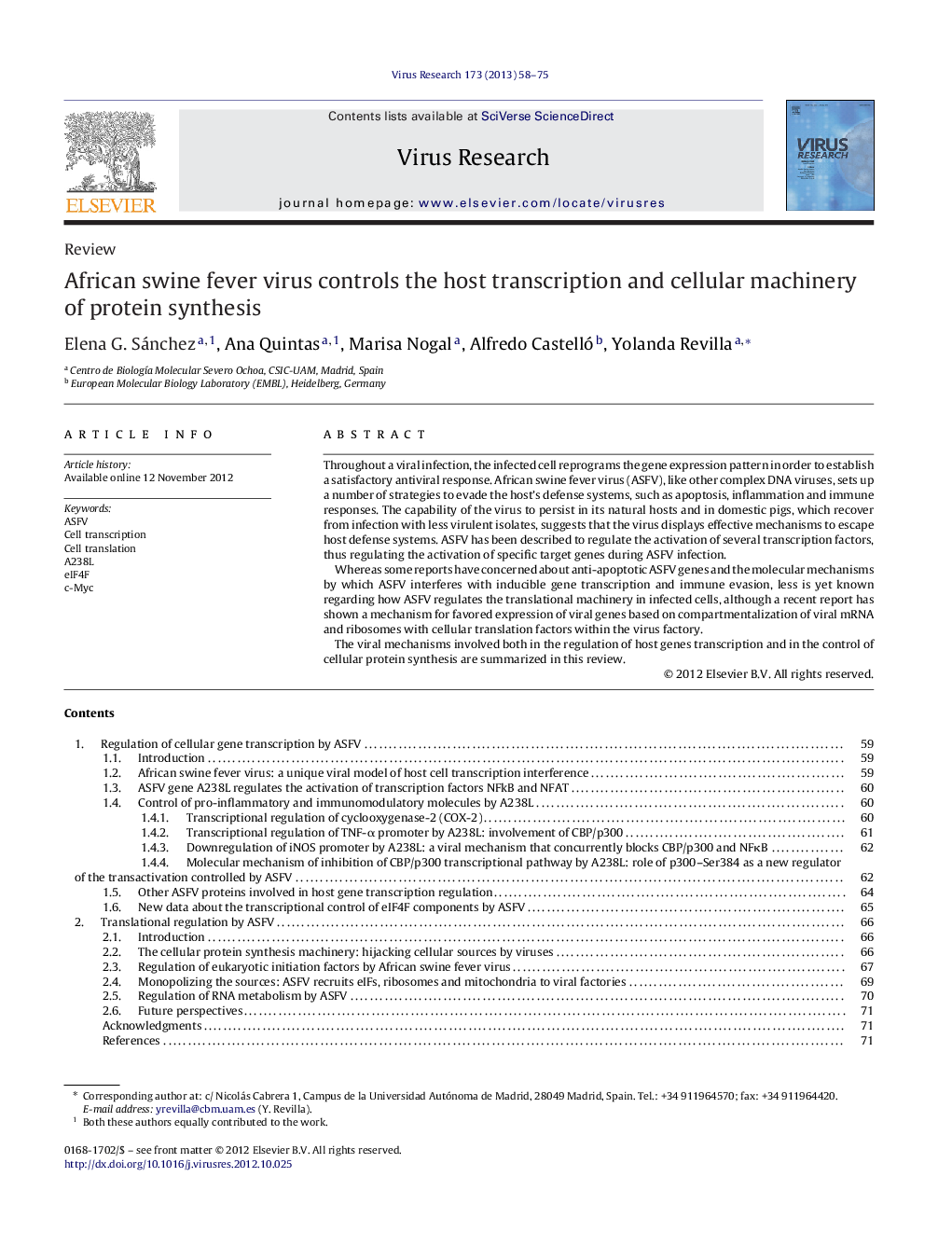| Article ID | Journal | Published Year | Pages | File Type |
|---|---|---|---|---|
| 3428792 | Virus Research | 2013 | 18 Pages |
Throughout a viral infection, the infected cell reprograms the gene expression pattern in order to establish a satisfactory antiviral response. African swine fever virus (ASFV), like other complex DNA viruses, sets up a number of strategies to evade the host's defense systems, such as apoptosis, inflammation and immune responses. The capability of the virus to persist in its natural hosts and in domestic pigs, which recover from infection with less virulent isolates, suggests that the virus displays effective mechanisms to escape host defense systems. ASFV has been described to regulate the activation of several transcription factors, thus regulating the activation of specific target genes during ASFV infection.Whereas some reports have concerned about anti-apoptotic ASFV genes and the molecular mechanisms by which ASFV interferes with inducible gene transcription and immune evasion, less is yet known regarding how ASFV regulates the translational machinery in infected cells, although a recent report has shown a mechanism for favored expression of viral genes based on compartmentalization of viral mRNA and ribosomes with cellular translation factors within the virus factory.The viral mechanisms involved both in the regulation of host genes transcription and in the control of cellular protein synthesis are summarized in this review.
► The ASFV viral gene A238L regulates NFkB and NFAT activation. ► A238L controls COX-2, TNF-α and iNOS by promoter transcriptional regulation. ► A238L-dependent transcriptional regulation involves the function of CBP/p300. ► ASFV regulates the activation of cellular eukaryotic initiation factors. ► ASFV hijacks the cell protein synthesis machinery and cellular sources.
